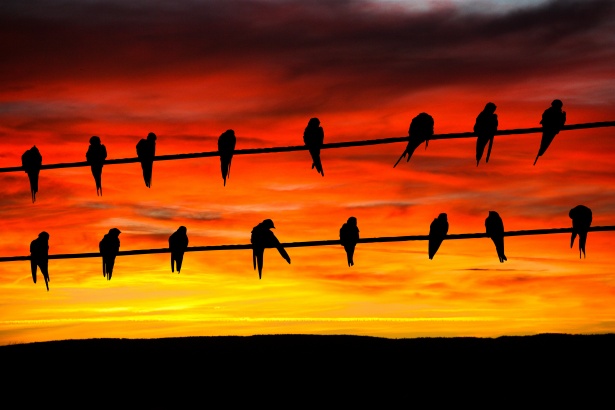
A couple of months ago, someone asked me if birds could predict the weather. Well, sort of.
Watching my bird feeder, I notice the activity becoming almost frantic just before rain and wind start. When the sun comes out, fewer birds are feeding, and less often. There’s science behind this. In one study, captive White-throated Sparrows were experimentally subjected to different pressure regimes. Under high pressure the birds woke in the morning and began to preen themselves. When the pressure was lowered, the birds awoke and immediately began to feed, expecting bad weather challenges.
The Old Farmer’s Almanac says “If crows fly in pairs, expect fine weather; a crow flying alone is a sign of foul weather.” I don’t know about that, but we have all noticed birds perching on power lines as a storm approaches. That’s because low barometric pressure means a low density of air molecules, making it harder to fly, and they perch more as a low-pressure center (cold front) approaches.

During spring migration, weather on the south end of a low-pressure center encourages birds to move northward as the prevailing wind is from the south. In the fall, many migratory birds move south behind a cold front along with helpful but stiff north winds and cold temperatures. When a high-pressure center arrives, the winds become light and variable and the birds take a breather to rest and feed. Since migrating birds tend to stay flanked by cold and warm fronts, they move in waves and sometimes spectacular swarms of birds can be seen in places like Grand Isle, Louisiana, a barrier island at the northern edge of the Gulf of Mexico that is reputed to have the highest density of birds in the U.S. during a spring migratory landfall.
There is no question that migratory behavior of birds is affected by weather. The impetus to migrate is not the weather (it is the photoperiod), although storms can delay departure and winds can slow or speed up passage and even blow birds off course. Hurricane Sandy in 2012 produced unusual sightings such as Northern Gannets in New York Harbor and a Pomarine Jaeger off Cape May, New Jersey. In Quebec in 2005 the local Chimney Swift population fell by 50 percent after Hurricane Wilma blew the birds off course, some as far as Western Europe.
A snowstorm interrupted a migration of Lapland Longspurs in northern Iowa and southern Minnesota on the night of March 13-14, 1904. It was not particularly cold and the wind was calm, but it was snowing heavily. Birds fell from the sky and landed everywhere – in towns, on roads, on roofs, and especially around streetlights. Floating on the surface of two small lakes in the area were an estimated 750,000 birds. This disaster resulted in a million and a half dead Lapland Longspurs decimated by unusual weather.
So, birds can’t predict the weather although their behavior often indicates that change is coming. But. like us, they are sometimes surprised.
The above was extracted from my book Beaks, Bones, and Birdsongs.
Interesting. I never thought of the impact of weather on migration, but nature is sensible
A Snowy Owl was spotted for the first time in Southern California this past week.